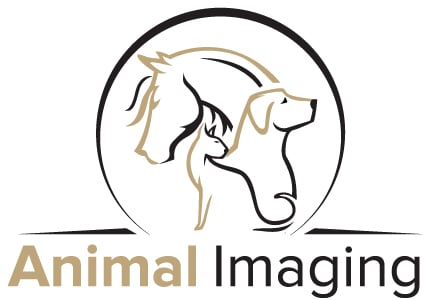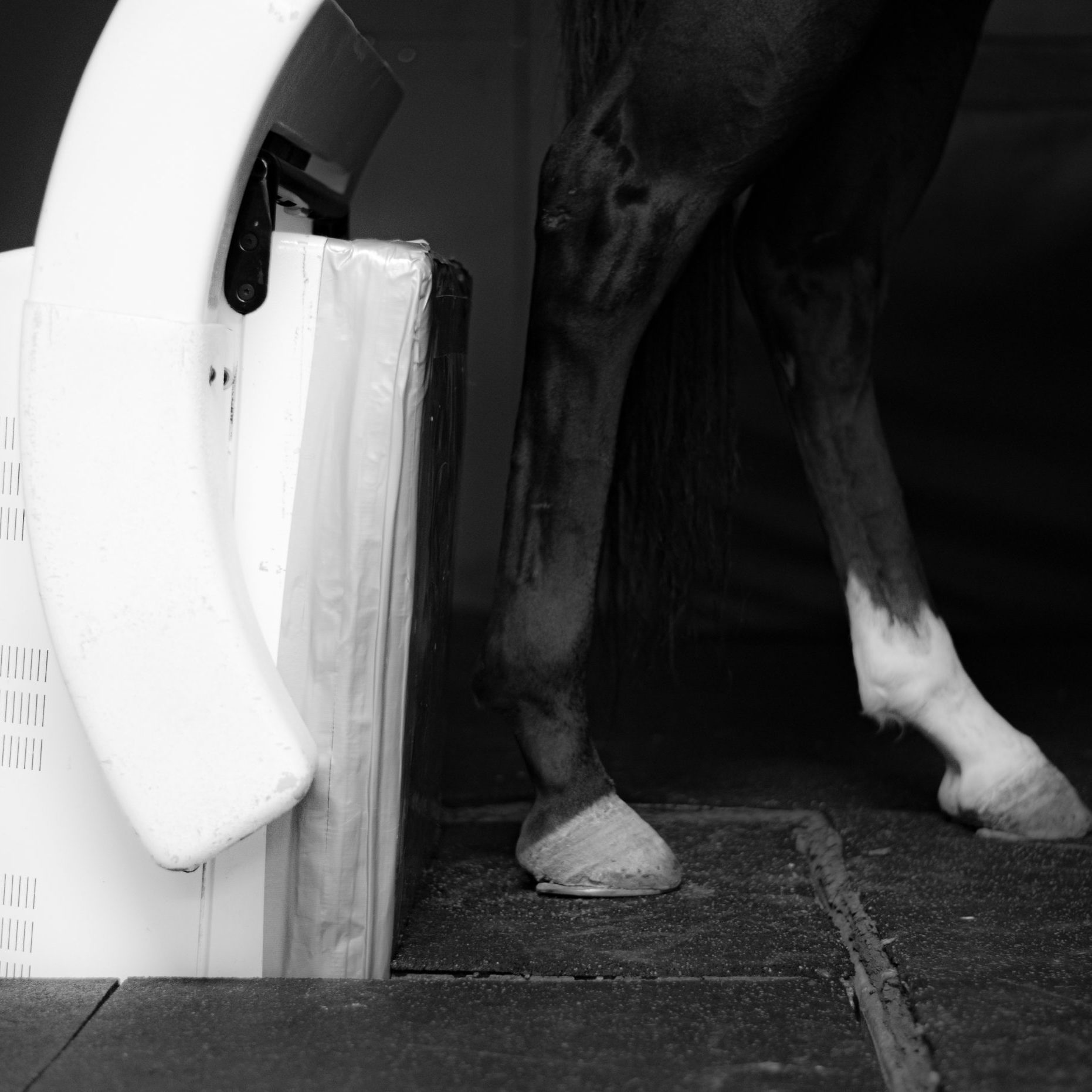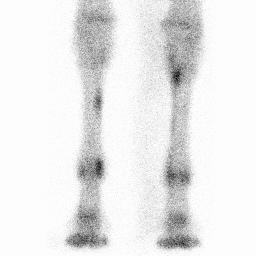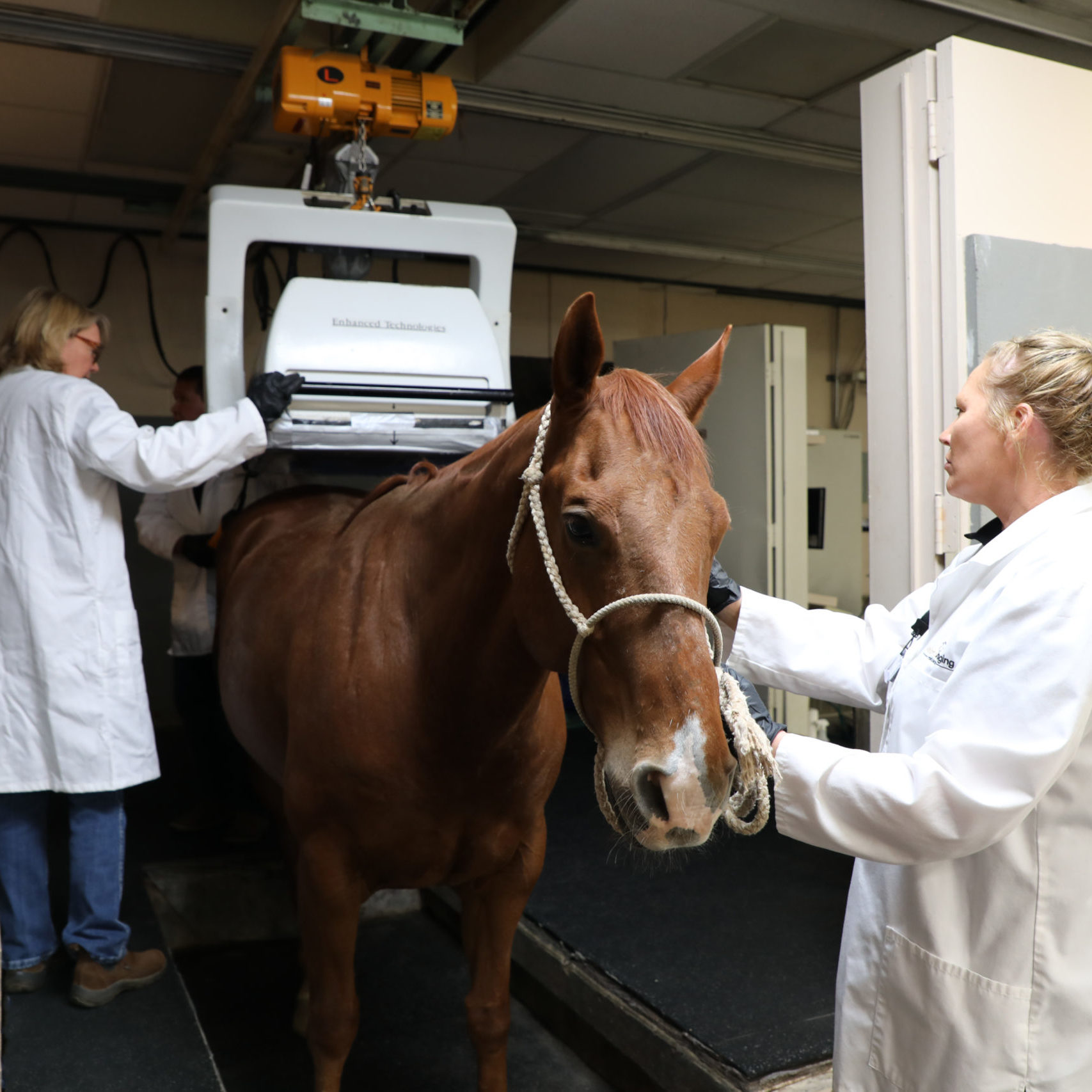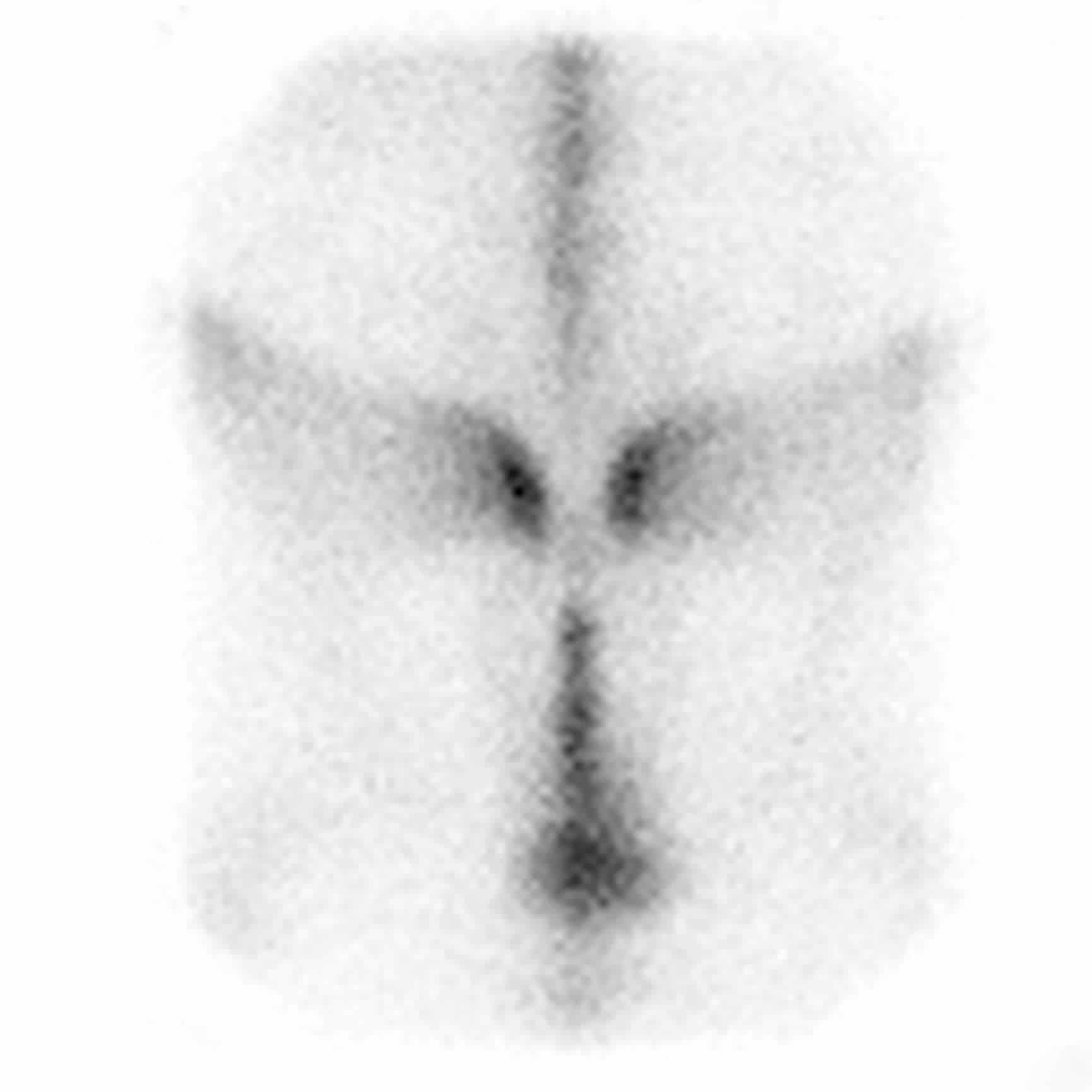Nuclear Medicine, also called Scintigraphy or Bone Scan, is the detection of gamma rays emitted from the decay of a radionuclide injected into the horse. The radioisotope that gets injected is absorbed in increased amounts in regions of the body undergoing remodeling processes. Using a special gamma camera, any areas of increased uptake can be identified and pursued further with other diagnostic techniques.
Bone that is stressed or is repairing from an injury will absorb an amount of the radiopharmaceutical to show a “hot spot” on the gamma camera. An important aspect of scintigraphy is the post-scan lameness exam.
Animal Imaging has the capability to scan the entire horse, front half, back half, or a region of interest. A region of interest includes up to 10 images.
Common reasons for Nuclear Medicine
- Poor performance or an undefined cause of lameness
- Suspected cervical, thoracolumbar or pelvic region pain
- An intermittent or subtle lameness that cannot be reproduced to utilize local anesthetics
- Lameness in multiple limbs
What to Expect
Prior to the procedure, a veterinarian will perform a physical examination on your horse to ensure it is ready for the procedure. The entire process takes only a few hours, and the radioactive marker is 97% decayed in 30 hours, so horses can leave two days after the examination is completed. If your horse can go home any earlier, we will be sure to let you know.
Following the examination, one of our board-certified radiologists will review all the images and submit a final report within 24-48 hours of the exam. The report and clinical findings will then be sent to the referring veterinarian. Clients should follow up with the referring veterinarian for explanation of results and information on treatment or management.
Click here to learn more about bone scans from a recent Case Study.
We are here to help.
At Animal Imaging, our passion is providing the best care and information to you and your veterinarian.
We are proud to have a dedicated team of board-certified veterinary radiologists available for your pet.
Questions or concerns? Call us!
(972) 869-2180
BE IN THE KNOW
Enter your email to be the first to hear about the latest case studies, announcements, and upcoming exclusive CE events.
